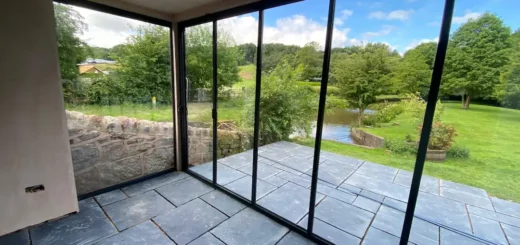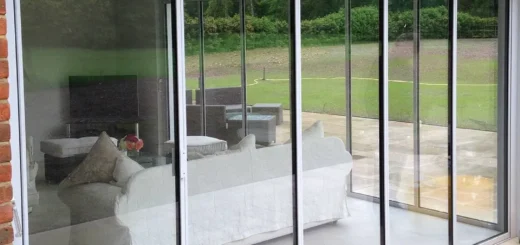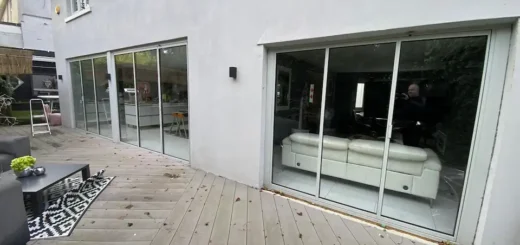Internal Conservatory Doors – What Should I Buy?
Table of Contents
Types of Internal Conservatory Doors
Choosing the right doors for your conservatory can make a world of difference in how you use and enjoy the space. Internal conservatory doors come in various styles, each offering unique benefits to suit different needs and preferences.
Sliding Doors
Sliding internal conservatory doors are a popular choice for many homeowners. They glide smoothly along tracks, taking up minimal space when open. This makes them ideal for conservatories where floor space is at a premium. Sliding doors can span wide openings, allowing for an unobstructed view of your garden when closed and easy access when open.
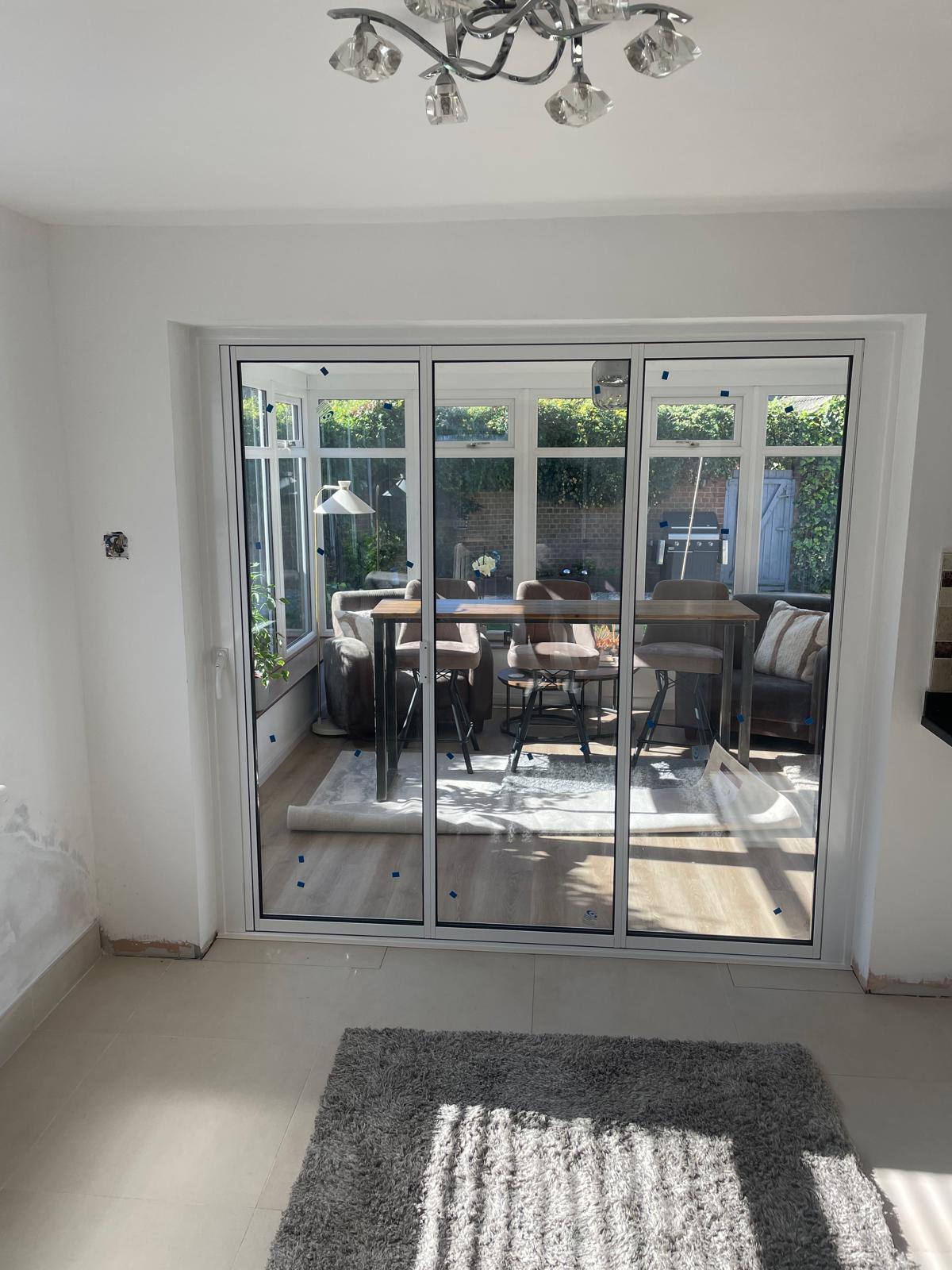
Bifold Internal Doors
Bifold internal doors with glass (also known as concertina doors) are another excellent option for conservatories. These doors fold back on themselves, accordion-style, creating a wide opening between your conservatory and the rest of your home. When fully open, internal bifold doors can help your conservatory feel like an extension of your living space.
Internal bi-fold doors are particularly useful in larger conservatories, creating a spacious, open-plan feel for entertaining or simply enjoying on a warm day. When closed, they provide effective insulation, helping to keep your conservatory comfortable year-round.
French Doors
For a classic look, French doors remain a timeless choice for interior conservatory doors. Typically consisting of two doors that open from the centre, they provide a generous entryway when both are open. French doors often feature multiple glass panes, lending a traditional charm that complements both modern and period homes.
While they may not offer as wide an opening as internal bi-fold doors or sliding options, French doors can be a good fit for smaller conservatories or where a more formal division between spaces is desired. They’re also relatively straightforward to install, which can be a plus if you’re looking to update your conservatory without major construction work.
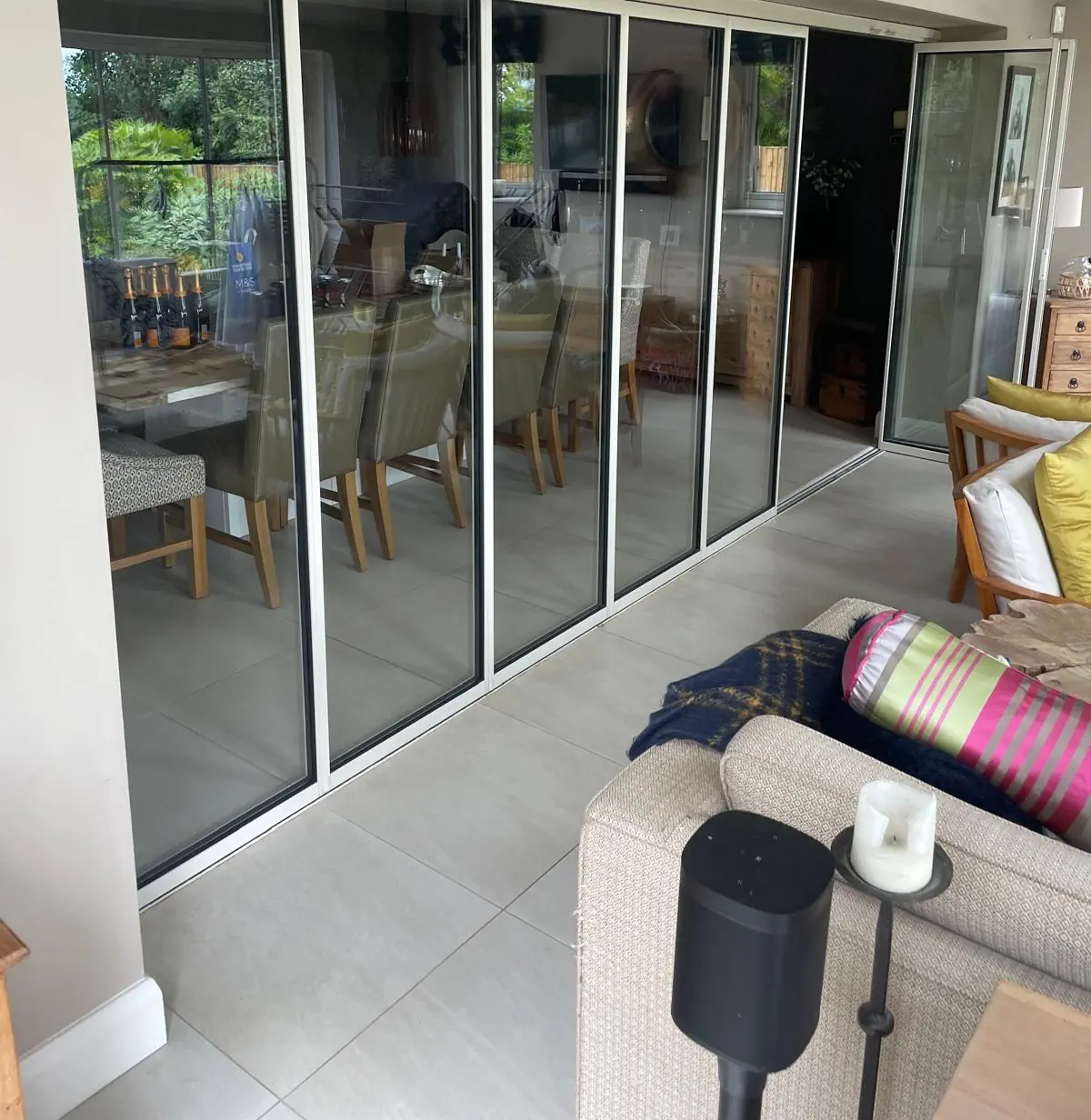
Slide and Turn Doors
Slide and turn doors, also known as slide and fold doors, offer a flexible solution for your conservatory. These doors combine the best features of sliding and bifold systems. Each panel can slide independently along a track and then pivot to stack neatly at one end.
This design gives you more control over how you use your space. You can open just one panel for quick access or fold back the entire set of doors neatly to one side for a wide opening. Slide and turn doors work well in conservatories of various sizes, adapting to your needs as they change throughout the day or season.
Key Features for Internal Conservatory Doors
Space Usage
Door opening mechanisms greatly impact conservatory layout and functionality. Sliding conservatory internal doors save space, making them ideal for compact areas or tricky furniture arrangements. Bifold doors open up large areas but require folding clearance. In high-traffic zones, durable traffic doors might be the best fit.
Thermal Efficiency
Double glazed doors are the norm for modern conservatory internal doors, offering solid insulation against temperature fluctuations. Some manufacturers push this further with triple glazing, ramping up thermal performance. Frame materials also impact heat retention; uPVC frames excel in insulation and low maintenance, while aluminium frames, though sleeker, may require thermal breaks to prevent heat transfer.
Noise Reduction
Glass thickness and pane count in interior conservatory doors directly influence sound insulation. Laminated glass, often incorporated in double glazing, boosts noise reduction capabilities. For peak acoustic performance, some door makers offer specialised acoustic glass options.
Light Transmission
Conservatory doors typically feature expansive glass panels, flooding the space with natural light. Tinted or frosted glass options provide glare reduction and privacy without sacrificing brightness.
Styling Your Internal Conservatory Doors
Frame Materials
uPVC, aluminium, and timber are the most common frame materials for conservatory internal doors. uPVC offers durability and low maintenance, making it a popular choice for many homeowners. Aluminium frames provide a sleek, modern look and excellent strength-to-weight ratio, allowing for larger glass panels. Timber frames bring warmth and character, particularly suited to traditional or period properties.
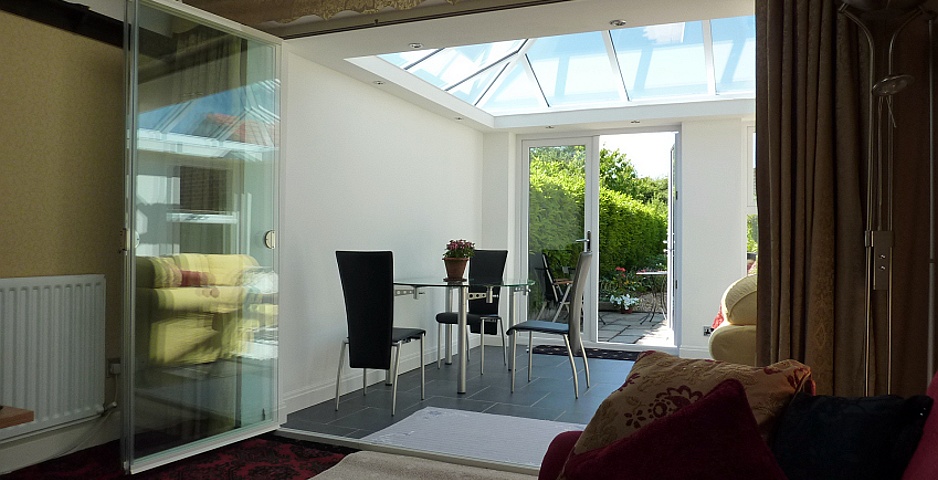
Glass Options
Glass is a key component of internal conservatory doors, impacting both aesthetics and energy efficiency. Clear glass increases light flow, while frosted or patterned glass adds privacy. Some homeowners opt for frameless glass doors to create an uninterrupted visual flow. Low-emissivity (low-E) glass helps retain heat in winter and reflect it in summer, improving your conservatory’s thermal performance.
Colour Choices
White internal sliding doors remain a classic choice, offering a clean, bright look that suits most decors. However, modern doors come in a wide range of colours and finishes. Grey, black, and woodgrain effects are gaining popularity, allowing homeowners to match their conservatory doors to existing windows or create a striking contrast. For a bolder statement, some manufacturers offer custom colour options to perfectly match your interior design scheme.
Hardware and Finishing Touches
Handle styles range from minimalist modern designs to ornate traditional options. You can often customise the finish of your hardware – brushed nickel, chrome, or brass – to complement your overall door design. For sliding and bifold doors, the track system is an important visual element. Some manufacturers offer flush tracks that sit level with your flooring, creating a smoother step between sides.
Practical Aspects of Internal Conservatory Doors
Maintenance Requirements
Different types of internal conservatory doors require varying levels of upkeep. Sliding interior doors, particularly those made from uPVC or aluminium, often need minimal maintenance beyond regular cleaning. A simple wipe-down with a damp cloth and occasional lubrication of tracks and rollers usually suffice. Timber doors, while beautiful, may require more frequent attention, including periodic staining or painting to protect against moisture and wear.
Room divider doors with multiple panes of glass might need more frequent cleaning to maintain their sparkle and clarity. However, self-cleaning glass options are sometimes available, which use a special coating to break down dirt when exposed to sunlight, reducing the need for manual cleaning.
Security Features
While room divider doors primarily serve to divide spaces within your home, security may be something you wish to think about, since a conservatory can be more vulnerable to breaking in than the rest of the house. Many modern designs incorporate multi-point locking systems, providing added peace of mind. For sliding and bifold doors, look for models with secure locking mechanisms at various points along the frame. Some manufacturers offer internal conservatory doors with toughened or laminated glass, which is more resistant to breakage.
Accessibility
Ensuring easy access through your interior conservatory doors is often important, especially for households with young children, elderly members, or individuals with mobility issues. Low-threshold options can eliminate trip hazards and make movement between spaces smoother. For sliding doors, some systems offer soft-close mechanisms or motorised options for effortless opening and closing.
Installation Complexity
The complexity of installing internal conservatory doors can vary widely depending on the type and size of the doors, as well as the existing structure of your conservatory. Sliding doors often require a sturdy overhead track and may need reinforcement of the supporting wall. Internal bifold doors need precise alignment to operate smoothly. French doors are generally simpler to install but may require more space for their swing arc.
Professional installation is often recommended for internal conservatory doors to ensure proper fit, function, and energy efficiency. Some door systems come pre-hung in their frames, which can simplify the installation process. However, custom sizes or complex configurations might require more extensive on-site work.
Choosing Your Ideal Internal Conservatory Doors
Selecting the right internal conservatory doors involves balancing personal preferences with practical needs.
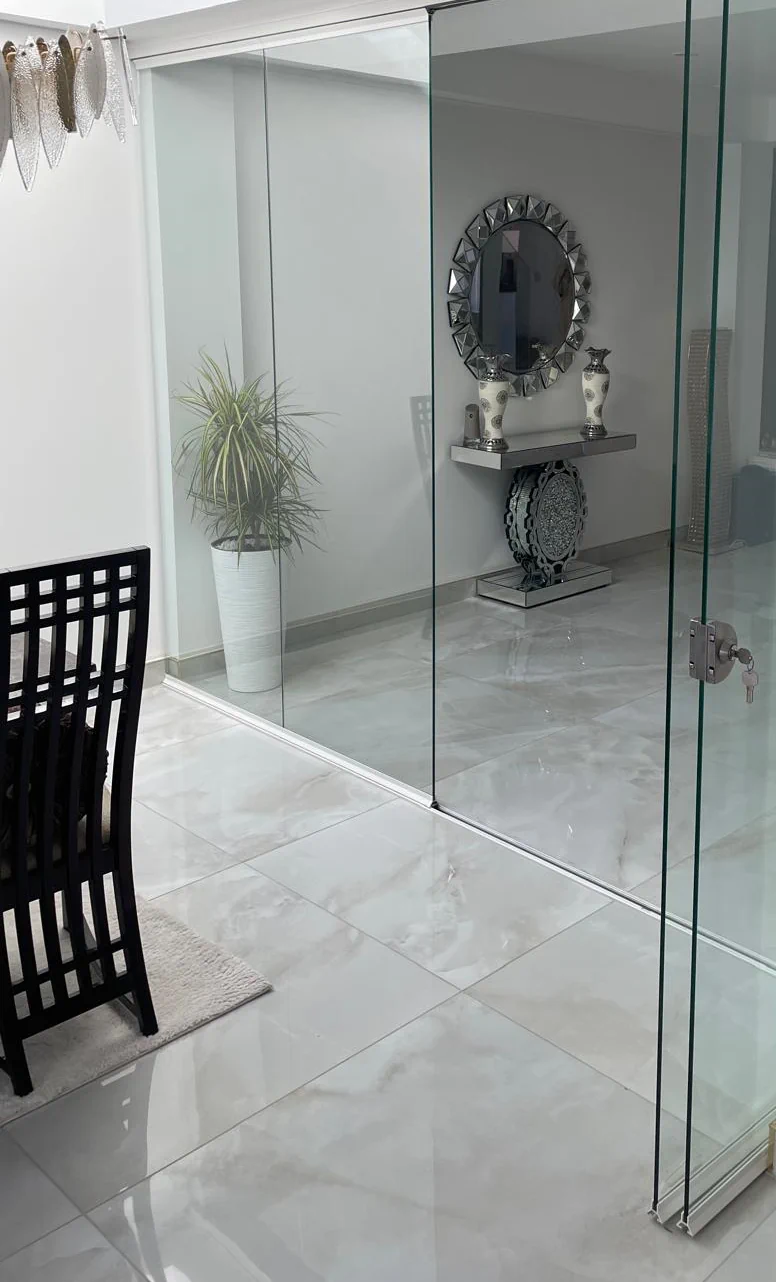
Assessing Your Specific Needs
Start by evaluating how you use your conservatory. Do you need to divide the area from the rest of your home for temperature control? Or are you looking for an open-plan feel? Your answers will guide your choice of conservatory internal doors. If you frequently entertain, wide-opening options like bifolds or sliding doors might suit you best. For a quieter reading nook, French doors could provide the right balance of openness and separation.
Think about your home’s architectural style too. Modern houses often pair well with sleek, minimalist internal conservatory doors, while period properties might benefit from more traditional designs. Think about the flow between your main living areas and the conservatory. The right doors can help make your conservatory feel like a natural extension of your home.
Climate is another factor. If your conservatory tends to overheat in summer or feel chilly in winter, look for interior conservatory doors with high-performance glass and good insulation properties. This can help regulate temperature and potentially reduce your energy bills.
Future-proofing Your Choice
When selecting internal conservatory doors, think beyond your current needs. Will your lifestyle or family situation change in the coming years? Doors with flexible configurations, such as sliding systems that can be partially or fully opened, offer adaptability as your needs evolve.
Durability is key for long-term satisfaction. Choose materials and designs that can withstand frequent use and changing weather conditions. High-quality hardware and robust locking mechanisms will ensure your conservatory doors remain secure and easy to operate over time.
There’s also the potential impact on your home’s value. Well-chosen internal conservatory doors can be a selling point, appealing to future buyers who appreciate the added functionality and style they bring to the space. Opting for timeless designs rather than trend-led choices can help maintain this appeal for years to come.
Internal Conservatory Doors FAQ
What are the benefits of internal conservatory doors?
Internal conservatory doors offer numerous advantages. Bifold conservatory doors (also known as concertina doors) can create a wide opening. Sliding internal conservatory doors are excellent space-savers, ideal for smaller conservatories. French doors and double doors provide a classic look and can be a good choice for traditional homes. These various door types can help control temperature, reduce noise, and allow you to use your conservatory year-round.
Can I install bi-folding doors in an existing conservatory?
Yes, you can often install bi-folding doors (sometimes called “concertina doors”) in an existing conservatory. The process typically involves removing the current doors and possibly modifying the opening to accommodate the new doors. It’s important to ensure your conservatory structure can support the weight of bifold internal conservatory doors, as they can be heavier than other door types.
What are the latest trends in conservatory door design?
Current trends in conservatory door design focus on maximising light and views while maintaining energy efficiency. Frameless glass doors are gaining popularity for their minimalist aesthetic and ability to create an uninterrupted visual flow. Modern internal sliding doors with slim frames and large glass panels are also in vogue, offering a sleek look that suits contemporary homes.
Colour-wise, there’s a move away from traditional white towards darker shades like anthracite grey and black, which create a striking contrast with greenery outside. Energy-efficient features like triple glazing and low-E glass are becoming standard as homeowners prioritise sustainability and comfort.
Are there pet-friendly options for conservatory doors?
Yes, there are several pet-friendly options for conservatory doors. Some sliding doors come with built-in pet flaps, allowing your furry friends to move freely between the conservatory and the rest of the house. For bifold or French doors, you can install separate pet doors adjacent to the main doors. Scratch-resistant glass or protective films can be applied to the lower portions of glass doors to prevent damage from enthusiastic pets. It’s also worth looking into doors with low thresholds to prevent trips for older pets or those with mobility issues.
How do I choose between hinged and sliding conservatory doors?
Choosing between hinged and sliding conservatory doors depends on several factors. Hinged doors, like French doors, offer a traditional look and can be opened fully to create a wide entrance. They’re often cheaper and easier to install but require space to swing open. Sliding doors are excellent space-savers, making them ideal for smaller conservatories or where furniture placement is a concern. They typically offer larger glass areas. Think about your available space, desired aesthetic, budget, and how you plan to use your conservatory when making your decision.
What are the best plants to place near internal conservatory doors?
The best plants to place near internal conservatory doors are those that can tolerate varying light conditions and temperature fluctuations. Palms, such as the Kentia or Parlour Palm, are excellent choices as they’re hardy and add a tropical feel. Succulents and cacti are also good options, as they can withstand the heat that often builds up near doors. For a splash of colour, try placing flowering plants like African Violets or Begonias slightly away from the doors to protect them from draughts. Remember to choose plants that are non-toxic if you have pets that might access the conservatory.
What’s the difference between French doors and double doors for conservatories?
While often used interchangeably, French doors and double doors have some distinct characteristics. French doors typically feature large glass panes throughout the door, increasing light transmission. They usually open outwards and have a dividing strip down the middle when closed. Double doors, on the other hand, can have various designs, including solid panels or smaller glass sections. They can open inwards or outwards and may not have a visible divide when closed. French doors often lend a more traditional or continental feel to a conservatory, while double doors can be designed to match a wide range of styles.
Both types can be excellent choices for connecting your conservatory to the main house, depending on your aesthetic preferences and practical needs.
About SunSeeker Doors
With over 20 years of experience, SunSeeker Doors remains at the forefront of door design with our quality-tested patio doors and related products, including the bespoke UltraSlim aluminium slide and pivot door system, Frameless Glass Doors, and Slimline Sliding Glass Doors. All of our doors are suitable for both internal and external use.
To request a free quotation, please use our online form. You may also contact 01582 492730, or email info@sunseekerdoors.co.uk if you have any questions.


